Corfu is frequently called "the island of the Phaeacians", as it is identified by most archaeologists with the mythical island of the Phaeacians. This is a place that has it all. Stunning beaches with blue waters, picturesque alleys that transport you to other times, palaces, fortresses, museums, churches and everything else one can dream of! It is one of the few Greek islands that have life all year round!
A few words about the island
Corfu is an island of the Ionian Sea and together with the rest of the Ionian Islands make up the region of Ionian Islands. It is one of the northernmost and westernmost islands of Greece, as well as one of the most densely populated in the Mediterranean, with a population density of 193 inhabitants per square kilometer! Foreigners call it Corfu (the name of the island in Greek is Kerkyra), after a corruption of its Byzantine name Corfo, from the two peaks that can be seen as the visitor approaches the island. Underneath I chose for you what I believe you should see when visiting the island for the first time.
10) Old Perithia
Old Perithia is a picturesque village of three inhabitants in the northeastern part of the island, on the slopes of Mount Pantokratoras, which has been characterized since 1980 as a historical monument. It is the oldest village of Corfu, and its location was dictated by the fear of pirates and raids, but also malaria that afflicted the coasts! Much has been said about the origin of the name of the village, but the prevailing scenario is that it came from the words "Peri-thea", because the settlement is visible from the mountains that surround it. A visit there is equivalent to a journey through time, since it is an architectural gem with about 130 houses built mostly on the basis of Venetian architecture! Although it looks like a ghost village, it causes admiration and charm to anyone who visits it!
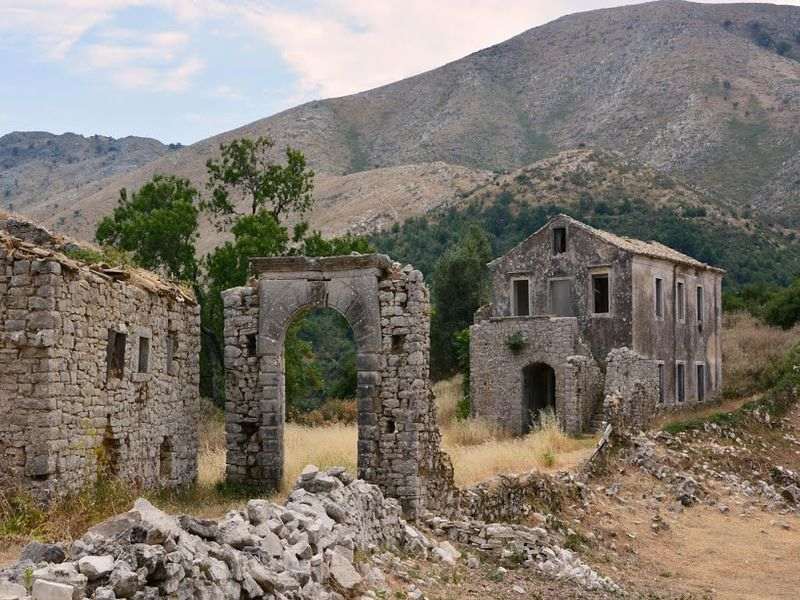
9) Mon Repo
The imposing neoclassical palace Mon repo is located in Paleopolis and is a source of natural beauty in its own right, as it hosts rare species of plants and animals. It was created out of love, since the Englishman sir Frederic Adam built it for the sake of Corfiot Nina Palatianou, who dreamed of living in a small palace in the countryside! After the union of the Ionian Islands with Greece, it was granted to King George I, while since 1995 it has passed into the hands of the Greek state and is open to the public! It is interesting to note that Philip Mountbaden, the later Duke of Edinburgh and husband of Queen Elizabeth of England, was born in Mon Repo! Today, it houses the Paleopolis Archaeological Museum.
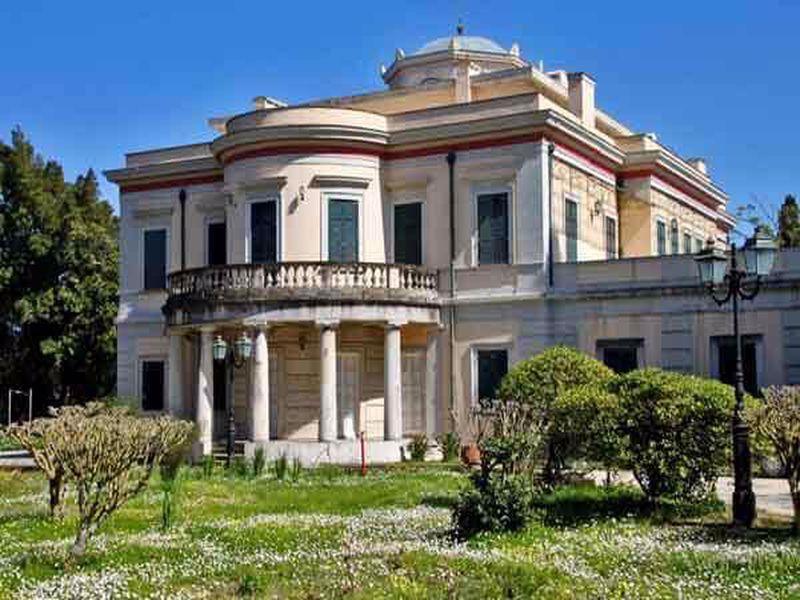
8) Museums
In Corfu there are many interesting museums and art spaces that will attract your attention. In my opinion, it is worth starting from the Palace of Michael and George in the old town, which houses the Museum of Asian Art. The museum's collection began to be gathered in 1927 and consists mainly of donations, with the largest being that of Gregory Manos with 10,500 pieces!

Plus, don't miss a visit to the Archaeological Museum of Corfu, which houses archaeological finds from Corfu and Thesprotia, as well as the Municipal Gallery, with its rich collection of paintings.
Finally, other interesting museums of the city are the Museum of Dionysus Solomos, the Byzantine Museum of Antivouniotissa and the Paper Currency Museum!
7) Temples and Monasteries
Religion in Corfu, as in all Greece of course, is a critical element in the life of the inhabitants and this can be seen from the countless churches that exist on the island. In fact, there are about 20 in the old town!
The most important of these is, of course, the Church of Saint Spyridon in the heart of the old town! This temple was constructed in 1590 and is a representative example of the ecclesiastical architecture of the Ionian Islands. Its main features are the impressive bell tower and the magnificent fresco on its roof.
Also, do not hesitate to take a walk through the dazzling red Church of Panagia Spiliotissa. This church dates back to 1577, and its name comes from the area where it is located, Spilia (cave)! Very beautiful is moreover the Catholic Church of St. Jacob in town hall square, the Church of St. John and the Church of our Lady of strangers!
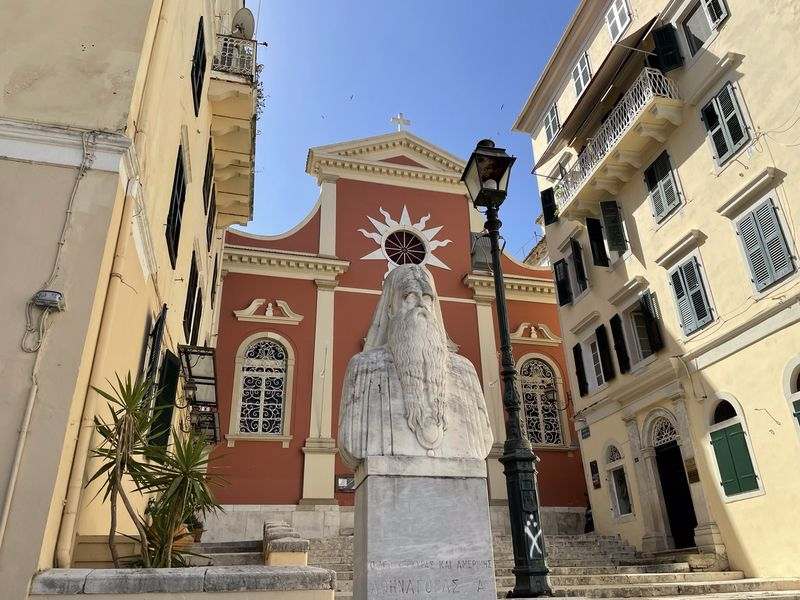
Finally, regarding the monasteries, I suggest you visit the Monastery of Paleokastritsa and the Monastery of Vlachernon. The first monastery is located at the top of the promontory of the same name, which offers a wonderful view of the sea and also has a museum with religious objects. The second monastery is located in the Kanoni area next to the airport. Apart from this magnificent little church, you will have the opportunity to see the best sunset of the island with the planes flying right above you!
6) Beaches
Where you choose to swim in Corfu is something that should not trouble you, as all over the island there are wonderful beaches. On the western part starting from top to bottom, excellent beaches are St. Steven, Porto Timoni, St. Spyridon, Rovinia, Liapades, Stelari, Glyfada and Kontogialos. In the northern part it is worth visiting Sidari, the Canal D'amour (to which I will refer in more detail just below), Akrotiri Drastis and Peroulades or Longa! In the eastern part I would recommend Benitses, Ipsos, Barbati and Kerasia, while finally in the southern part St. Gordios, Chalikouna, Issos and Marathia!
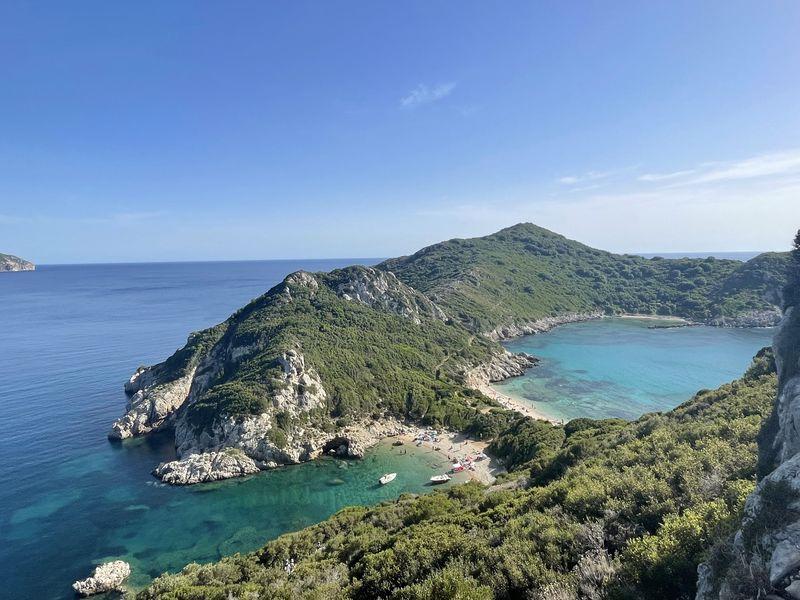
5) Canal D’ amour
The Canal D’ Amour is in a category by itself. It is essentially a creek, which has been created by the erosive effect of water on the sandstone rock! The natural effect of nature's elements changes the landscape at Canal D' Amour year after year, creating small caves, openings and other small channels with deep blue water! According to legend, its name comes from the tradition that couples who swim in these waters will be forever in love!
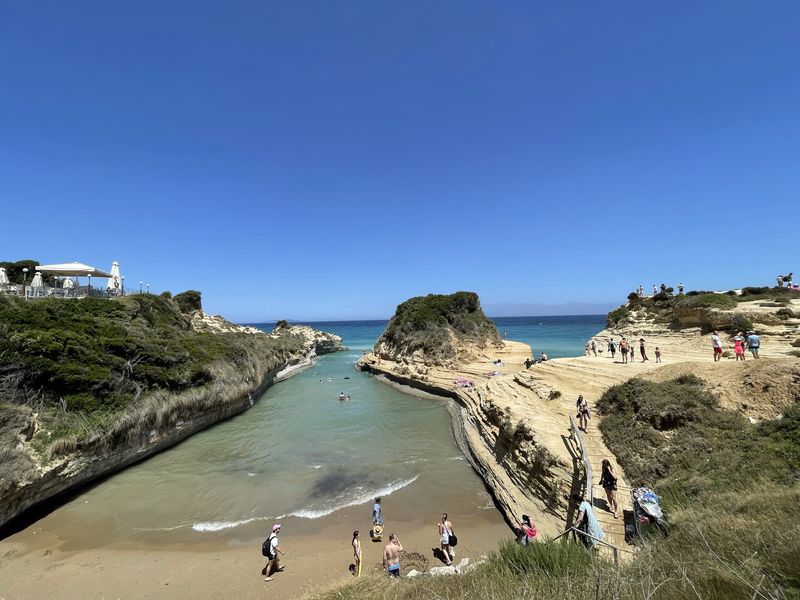
4) Kanoni-Pontikonisi
One place you should definitely visit in Corfu is Kanoni (cannon). It covers virtually the entire peninsula south the city of Corfu, while at that point in antiquity there was the ancient city of Corfu founded in the 8th BC century! Kanoni took its name from a cannon that was placed on the southern tip of the peninsula by the French in 1798, and which exists there to this day! I suggest you start your tour from the archaeological site of Paleopolis, with the Temple of Artemis, various monuments and the Acropolis. Continue with the Monastery of Vlachernon that I mentioned above and finally climb on one of the boats that are anchored in the harbor to pass across to Pontikonisi. The truth is that it is not something special, since it is essentially a verdant rock with a monastery on it. However, it is one of the most popular sights of Corfu, since according to Homer it was the ship of Odysseus which was stoned by the god Poseidon during the storm that washed up the legendary castaway, on the island of Phaeacians!
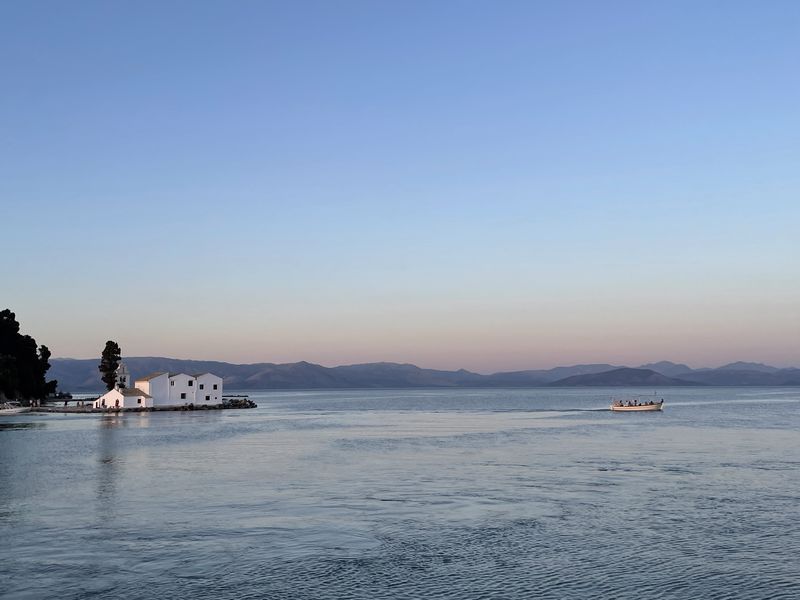
3) Achilleion
In the third place on the list, I have placed the Achilleion. The palace of Sissy as it is widely known, is located about ten kilometers outside the old town, in the village of Gastouri. Queen Elizabeth of Austria singled out Corfu on a tour of the Mediterranean islands and decided to settle there trying to overcome the grief of the tragic losses her family had and the tuberculosis that afflicted her. So she bought the house on top of the hill and with the help of the Italian architect Raffailo Carito, erected the palace in 1890, naming it after her favorite mythical hero, the Homeric Achilles. The decoration of Achilleion was done by Elizabeth herself and reflects her admiration and love for ancient Greece. Both the exterior tiered gardens and the interior of the building are decorated with statues of ancient philosophers, mythical heroes and ancient gods. In the entrance area there are many statues and in the peristyle busts of philosophers and Gods, a portrait of Empress Sissy on the right and a marble fireplace on the left, while finally the ceiling is adorned by a large fresco by the Italian painter Galopi, depicting the four seasons. Unfortunately, at this time Achilleion is under maintenance with most rooms of the palace not accessible. But you can admire the lower floor and the gorgeous and imposing gardens!
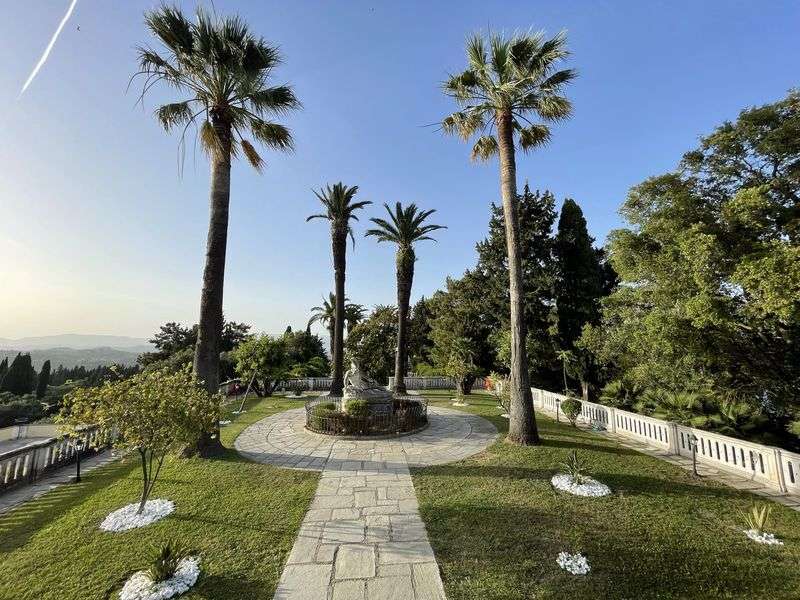
2) Paleokastritsa
Paleokastritsa is located in the northwestern part of Corfu and for many it is not only the most idyllic spot of the island, but also of the entire Ionian Sea! It took its name from the neighboring Angelokastro, the oldest castle on the island and consists of a series of beaches separated by small capes. These beaches are drawn out as if through paintings, with their waters taking on colors that are difficult to find elsewhere! Moreover, Paleokastritsa has the reputation for the coldest seas of Greece and from personal experience I can confirm this. If you find yourself there, it is worth either renting a boat or getting on a small boat and exploring the area at sea. Admire the historic cave of Nafsika, with the impressive colors of the underwater rocks, the cave of Saint Nicholas with the fantastic colors and finally the unique cave Blue Eye!
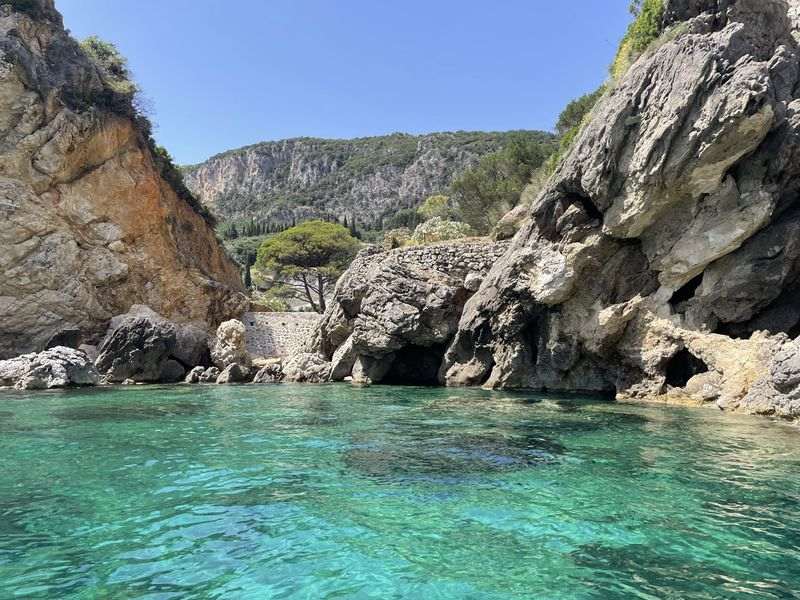
1) Old Town
Of course, the old town of Corfu could not be missing from the top! The elegant mansions, the impressive churches, the fortresses, the palaces and the narrow cantons will enchant you and transport you to another era. In fact, the old city has been declared a World Heritage Site by the International Congress for the Conservation of Historic Monuments (ICOMOS)! It is a maze of small alleys, in which you have to get lost! The image with the laundry hanging from one building to another is not the setting of an old Greek movie or some southern Italian city, but part of modern everyday life, in this unique corner of Corfu!
After exploring the narrow streets of the old town and admiring the churches and museums I mentioned above, your road will take you to Spianada. Spianada is considered the largest square in Greece and one of the largest in the Balkans. This beautiful square is the center of the social life of the people of Corfu, since all the major events, parades and customs are organized there, while it is surrounded by impressive and historical buildings such as the Michael and George Palace and the Liston. The second will give you perhaps the most recognizable image of the island. This is the meeting point for locals and tourists and the place where the custom of the jugs takes place at Easter! The complex began to be built between 1807-1814 to a design by Mathieu de Lesseps, father of the builder of the Suez Canal. During the period of the English Embassy (1815-1864), floors were added which are now inhabited by families or offices, while cafes and restaurants operate below.
The Town Hall Square also deserves a special mention. Of course, Corfu Town Hall dominates there, which is one of the most imposing buildings on the island. It is an impressive stone building, in an obvious renaissance style, with carved walls. Even today, the Town Hall is adorned with numerous sculptures, among which is the bust of the Venetian admiral Morosini, accompanied by four children, who depict his virtues. In the same square is in addition the Old Catholic Cathedral of San Giacomo (Saint James), which is characteristically reminiscent of Italian churches!
Ultimately, you should not miss a walk to the two fortresses of the island. The Old Fort is built on a rocky peninsula with two characteristic hills and is the eastern end of the city and the first thing one sees when approaching the island by boat. It is an architectural masterpiece, which has undergone many transformations and expansions over the centuries, but its current form is due to the Venetians. Apart from the historical and cultural interest, what makes the Old Fortress special is without a doubt the wonderful panorama it offers towards the Ionian Sea and the city of Corfu. Finally, the New Fortress was built on the hill of Saint Markus by the Venetians in the 16th century, for the protection of the city, since the security provided by the Old Fortress was no longer possible. Its construction began in 1576 and was completed in 1645, although several modifications were made since then. It is constructed on two levels in order to meet its dual role: harbor protection and inland control. It is an austere building, which stands imposingly above the Old Port, from where it has access, and offers a unique panoramic view of the city and the open sea.
How to go
In order to go to Corfu, there are two options. Either ship or plane. If you choose the first option then you should know that there are continuous routes from the Port of Igoumenitsa to that of Corfu. The prices are very affordable, and there is an extra discount if you book your tickets online! If, on the other hand, you choose to approach the island by air, you will land at Ioannis Kapodistrias airport, located just three kilometers outside the city center! This particular airport is an attraction in itself, since the planes pass very low during landing and take-off, resulting in great photos!
Where to stay
Corfu is a large island, which attracts tourist interest at all times of the year. My opinion is to stay in the center of Corfu and more specifically in the old town so that you are close to everything. So I recommend Aria Apartment. This is a fully renovated first floor apartment, which just opened its doors to the public this year! It has two bedrooms with double beds, a large living room with a sofa and a kitchen fully equipped with all the necessary electrical appliances!
What to eat
Corfiot cuisine could be called the cuisine of tradition. This is because it is so different from the rest of Greece, since the island did not experience Turkish occupation to be influenced by Oriental tastes. Corfiot cuisine has a purely Mediterranean character, with Venetian influences, while its basic ingredients are oil, pepper, legumes, pasta and vegetables. A typical Corfiot dish is Pastitsada. It is braised meat, beef or rooster, cooked with lots of spices and quenched with red wine, served with thick spaghetti! Another dish worth tasting is sofrito, made from thin slices of beef, which after being floured and left a little in the pan, are cooked with a white sauce of chopped garlic, parsley, white pepper, white wine, salt and vinegar. Plus, it is worth tasting pastitsio Dolce, eggplant pastokio, Haddock agiada, fogatsa and galetia.
For local flavors in the old town, you should visit the Marina Tavern. For pizzas or pasta the A Mano, for burger the Red Hot Chili Burger and for Mexican the La Tabernita Mexicana. According to the locals you will eat the best pastitsada in Doukades Village at Doukas Tavern, while Flisvos is also a good choice for seafood! As for breakfast I recommend Panetteria and Dovoras, while finally for sweet Stazei Meli for loukoumades and of course Papagiorgis for ice cream!
If this article seemed interesting or contributed to your quality information, then you can like my facebook page: o_thessalonikios or follow me on instagram!
Mouzakidis Pantelis









